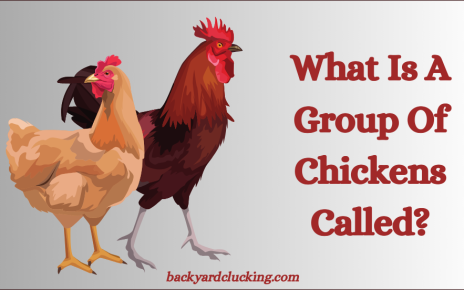Have you ever wondered how a chicken can digest all the food it eats? Or, have you ever considered that there might be more than one stomach involved? Well, believe it or not, chickens have four distinct stomachs in their digestive system–yes, that’s right, FOUR.
In this blog post, we will explore the fascinating anatomy of a chicken and find out exactly why and how they need 4 stomachs.
Plus, we will examine what goes on inside each of those 4 beautiful tummies so you can become a poultry expert in no time. So come along with us as we venture into these friendly feathered creatures’ mysterious yet incredible world.
How Many Stomachs Does a Chicken Have?
Chickens are fascinating creatures with unique digestive systems that help them break down their food effectively. Instead of having just one stomach like humans, a chicken has four different stomach compartments that play critical roles in digestion. These compartments are:
- Crop: This is where the journey of the food begins. The crop acts as a storage space for food before it moves on to the rest of the digestive system. It allows chickens to eat large amounts of food quickly, which they can store and process later.
- Proventriculus: Next in line is the proventriculus, also known as the “true stomach” or “glandular stomach.” This section is responsible for secreting digestive enzymes and hydrochloric acid, which start breaking down proteins in the food.
- Gizzard: The gizzard is a fascinating and muscular organ that grinds down any complex objects in the chickens’ diet, such as small rocks or seeds. Chickens don’t have teeth, so the gizzard uses tiny bits of sand or grit and powerful contractions to crush food into smaller particles for further digestion.
- Cecum: Finally, we have the cecum, responsible for fermenting and absorbing nutrients from undigested food particles. It plays a critical role in breaking down tough plant material like cellulose.
It’s fantastic to learn how the different compartments in a chicken’s digestive system work together to break down and process various types of food effectively. Chickens have diverse diets, including insects, seeds, fruits, vegetables, and sometimes even small animals like mice!
How Does a Chicken’s Digestive System Work?
Let’s dive into the digestive process in chickens, starting with the following organs:
- Beak and Esophagus
- The digestive journey begins at the beak, where feed is picked up and swallowed. Chickens, like many other birds, do not have teeth. As a result, they rely on their highly adaptable beaks to break down food into digestible particles. Once the feed enters the esophagus, the tube-like structure contracts to propel the food down into the next organ: the crop.
- Crop
- The crop helps store and soften food before it moves on to the next chamber. This expandable pouch allows chickens to consume food rapidly and store it for later digestion. This extra storage space is quite helpful for chickens, allowing them to keep eating even when they cannot immediately digest their food.
- Proventriculus
- After the crop has softened the food, it is channeled to the proventriculus, also known as the glandular stomach. This is where the chicken’s gastric juices are produced. These acidic juices and digestive enzymes break down food further, particularly proteins, just like our stomachs do.
- Gizzard
- This section of the chicken’s stomach is unique and specialized. Often referred to as the muscular or mechanical stomach, the gizzard is highly dense and tough. Here, strong muscle contractions grind down the food particles even more. Chickens consume small pebbles or grit, which end up in the gizzard and help this grinding process. The gizzard ultimately physically breaks down the remaining food particles, facilitating easier absorption and digestion.
- Small Intestine
- Once the gizzard has completed its function, the now-pulverized nutrients pass into the small intestine, where absorption occurs. In the small intestine, enzymes released by the pancreas and bile from the liver help break down carbohydrates, proteins, and fats, enabling nutrient absorption into the bloodstream.
- Large Intestine and Cloaca
- The last leg of the digestive process takes place in the large intestine, where water is absorbed to form more solid waste. The leftover, undigested food is then expelled from the chicken’s body through the cloaca. Interestingly, urine, which is produced in the kidneys, also exits via the cloaca.
Fun Fact: The knowledge of the chicken’s complex digestive system can be traced back to the study of avian anatomy and physiology, which began as early as Ancient Greece. The famous philosopher Aristotle was among the first to systematically describe avian anatomy, although his observations were only sometimes accurate.
It was later, in the 16th and 17th centuries, that detailed and accurate descriptions of bird anatomy were published. Researchers like William Harvey and Marcello Malpighi contributed to our understanding of the chicken’s digestive system, helping us appreciate these incredible creatures’ unique design.
Summary
To sum up, chickens have four specialized stomach compartments that work together to ensure efficient digestion. Starting at the beak and ending at the cloaca, the digestive tract is an incredibly complex yet fascinating system that helps these birds get vital nutrients from their meals. Hopefully, this article has helped you gain a greater appreciation for the anatomy and physiology of these amazing animals.


